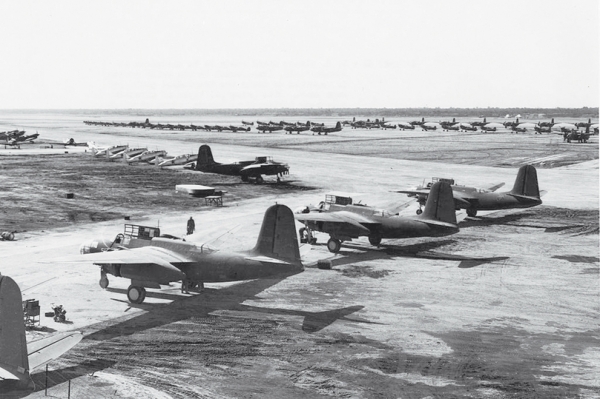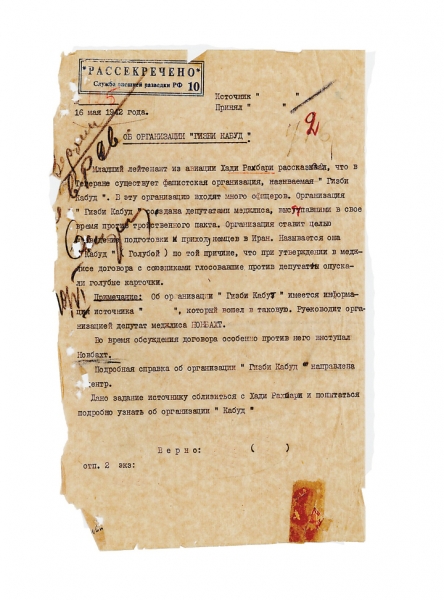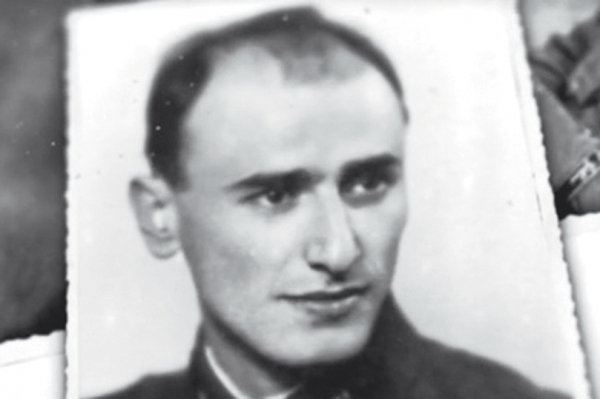The secret of the operation “Consent”
At dawn on August 25, 1941 (that is, two months after the beginning of the Great Patriotic War) The Soviet Union sent troops to Iran to prevent Nazi Germany from taking control of the territory of this country. Fantastic in terms of success (it took less than a week!) an operation called “Consent”, which few people know about.
In front of me are yellowed archive sheets with red spots. At the top is the inscription “Top secret”. Intelligence officers inform the Center that the organization “Gizbi Kabud”, which means “Blue Party”, operates in Iran. It and other similar groups, I quote, ” aim to prepare for the arrival of the Germans.” Documents aboutThe fight in Iran during the war between two intelligence services — Russian and German-was only recently declassified by the Foreign Intelligence Service. And those that the SVR of Russia provided specifically for MK in honor of the 80th anniversary of Operation Consent have not been published anywhere until now.

The Tehran Conference was an important stage in the unification of the allies.
From Mussolini and Hitler to “Consent”
This story cannot do without a preface that would explain why Hitler counted on Iran’s help in the Second World War and why pro-Nazi sentiments reigned in the Middle Eastern country.
— It all started long before the start of the war, back in 1925, – says the historian of intelligence Sergey Anatolyevich. — Then there was a palace coup, a new dynasty was founded, and Persia was declared Iran, which meant “the country of the Aryans”. Do you know who was imitated and adored by the Iranian elites? Mussolini! The main founder of Italian fascism was close to them with his ideas aboutthe superiority of some nations over others, the idea of building a police state. And they received Hitler even with even greater delight. Bottom line: Iran and Germany have been working closely together since 1933. Moreover, Berlin makes big bets on a strategic partner. Just one example: Iranian youth and military personnel of all ages were trained in the Third Reich.
On the eve of the outbreak of World War II, Iran began to turn into a kind of “branch” of fascist Germany. The Germans worked there at all strategically important facilities in the positions of advisers and even managers. The country became a haven for German spies who conducted their subversive activities against the USSR.

Aviation equipment at one of the Iranian airfields, ready to fly to the USSR. 1943.
QUOTE
“The Germans from Iran are in charge of intelligence working in the USSR. The Germans “fly” from Iran to the USSR and back like locusts.”
The Tehran Residency Center.1941.
The first months of the war showed the strong vulnerability of using the sea routes leading to the northern ports of the USSR for allied supplies. Iran, with its ice-free Persian Gulf and the railway that crossed its entire territory from south to north, could become and later became a strategic route for the supply of weapons, ammunition, food, raw materials, fuel and other cargo to the Soviet Union under Lend-Lease.
There was also a real danger that if German troops broke through from North Africa into Palestine, Syria, Iraq from the south and into the Caucasus from the north, the entry of Turkey and Iran into the war on the side of Germany would be a settled issue. It was only a hundred and fifty kilometers from the Iranian border to the oil fields of Baku. Without Baku oil, the Red Army would not have lasted even a month.
— When the Second World War began, the Iranian government declared its neutrality, – continues Sergey Anatolyevich. – The Shah of Iran refused Hitler’s demand to join the war against the USSR. But the situation could change at any moment – the country’s ruling elite and its military were on the side of Hitler. Soviet intelligence received information about the impending palace coup.
We are talking about a secret visit in early August 1941 to Tehran by the chief of German intelligence, Admiral Kanaris, to discuss all the details of such a coup. According to our intelligence, it was discussed and its date was set-August 28.
Needless to say, the USSR and Britain could not allow Germany to use Iran?! What is most interesting, the USSR had all the legal grounds for this. The fact is that on February 26, 1921, an agreement was signed between the young Soviet republic and Persia at that time. One of its points read: if there are attempts by third countries to turn Persia into a base for military actions against Russia, then the latter has the right to send troops to the territory of its neighbor.
— Three times the authorities of our country appealed to the leadership of Iran with a demand to expel all German citizens who conduct activities “incompatible with neutrality,” says Sergey Anatolyevich. — There was no reaction. Iran also rejected a similar demand from Britain. On August 21, 1941, it was decided to send allied troops — the USSR and Great Britain-to Iran.
On August 25, at dawn, the operation began. The ambassadors of the USSR and Great Britain presented a note to the Iranian Prime Minister Ali Mansour. It said that the Soviet troops entered Iran in the north, and the British in the south. When (a few hours later) German Ambassador von Ettel handed the Iranian leader an ultimatum from Hitler demanding to enter the war with the USSR, he replied: “The situation has changed radically.” A day later, the Iranian government gave an order to stop resisting the troops of the USSR and Britain. In fact, Operation Consent was completed on August 29. That is, everything took less than a week.
The introduction of troops by the USSR and Great Britain into Iran was the first joint military and political action of the countries that had just become allies in the war with Germany. In Iran, under the influence of significantly changed geopolitical conditions, interaction and agreements were worked out, with the help of which the USSR and Great Britain moved from a long-term confrontation to cooperation, including special services.
“Blue Party” in Iran
“Top secret. A second lieutenant from the aviation, Hadi Rahbari, said that there is a fascist organization called “Gizbi Kabud”in Tehran. This organization includes many officers. It was created by the deputies of the Mejlis, who opposed the triple pact at the time… The organization aims at the arrival of Germans in Iran.
It is called ” Kabud “(“Blue”) for the reason that when approving the agreement with the allies in the Mejlis, the deputies who voted against it omitted blue cards. Note: there is information about the organization “Gizbi Kabud” from a source who entered it, the organization is headed by the deputy of the Mejlis Nonbakht. The source was given a task to get closer to Hadi Rahbari and try to learn more about the Kabud organization.
This document has never been published anywhere. There are several signatures on a piece of paper that is worn to holes (apparently, it has been read so many times), although there is a note that it is executed in two copies.
And here is another document that has never seen the light of day:
“On May 11, 1942, on the day of a pre-arranged meeting, I visited the deputy of Nonbakht. The latter demanded a report on the work done from me. I informed him that I have already planned to involve 25 people in the organization of construction masters, where I work.
Nonbakht said that it is necessary to speed up their registration, and he changed the order of the oath. Namely, a written oath is not required to take, an oral one is enough. Next, Nonbakht gave me the following instruction:
1) Through the members of the cell, identify which political parties exist in the city of Tehran. Their composition and activities. Especially to find out about the moods of “Tud” and “Edalet”.
2) Establish the place of residence of British employees, register them and monitor who visits their apartments, since these places are the center of espionage. Nonbakht said that he was especially afraid of the British. Because they are pursuing an unclear policy in Iran, but he is not afraid of the Russians, since their policy is clear. The British are acrobats who lead a deceptive policy, they should be wary of and be prepared foreverything. A few minutes after our conversation, two persons unknown to me entered, who began to talk with Nonbakht about the events at the front. They expressed their opinion that if the Germans agree to give the Turks Iranian Azerbaijan, Iraq and other areas that were previously part of Turkey, the latter will act on their side, launching an offensive into the Caucasus. In this case, big events will unfold in Iran.”
— These documents report on the activities of pro-German nationalist parties in Iran, – comments Sergey Anatolyevich. — By 1942, there were at least 20 of them. The main one was the “Blue Party”. It was created by the deputy of the Mejlis Nonbakht (this is how his surname is spelled correctly. – Auth.), who studied in Germany. He once translated Hitler’s book “Mein Kampf”into Persian. Our intelligence veterans told us that he was a fanatic of nationalism. A terrible man who was ready to give his life to clear the way to Iran for Hitler. He was able to recruit about three thousand people to his party. It was to recruit, because it was a secret organization that resembled more an agent network than a party. She represented seboi five sections, ineach of which had a senior. And only they had the right and the opportunity to contact the leadership of the “Blue Party”. It was quite difficult to infiltrate there, but the Soviet intelligence officers successfully did it. And most importantly, they worked with those members of the party who could really influence its activities and provide reliable information. By the way, the name of the construction agent who told about the meeting with the deputy is still a secret: please note that his name is not in the declassified document.
There are really “white spots” in the text just in those places where the name should be in the meaning.
The “Blue Party” later became, in fact, part of another party — the “Iranian Nationalists” (“Melliyun-Iran”). For her, SS Sturmbannfuhrer Richard August, known as Franz Mayer, developed not only the program, but also all the attributes, including military uniforms (boots, black breeches, a blue shirt, an emblem similar to the Nazi swastika).

A document declassified by the archive of the SVR of Russia.
Ford vs. Grave Digger Myer
The entire diplomatic mission of Germany was expelled from Iran after Operation Consent. But this did not mean that the Germans no longer made attempts to take over the country. The confrontation between the Soviet and Nazi intelligence services on the territory of Iran continued until the end of the war.
The “trash and drive” (as contemporaries would say) that accompanied this battle would have been enough for a series no less interesting than the legendary “Seventeen Moments of Spring”.
I was shown declassified documents, where we are talking about the measures that were taken by the intelligence leadership to ” strengthen the operational-chekist work on the territory of Iran.” Recall that during the difficult war years — from 1939 to 1946 — the foreign intelligence service was headed by Pavel Mikhailovich Fitin. The documents speak about the creation and successful operation of a unique intelligence network in Tehran, which was led by Ivan Agayants — a legendary personality.

The main residency was headed by an experienced scout I. I. Agayants.
Agayants was fluent in French, Turkish, Spanish, Italian, Farsi and English. He came to Iran on the orders of Pavel Fitin in the summer of 1941, being only 30 years old. And I came with my wife, who, by the way, was pregnant at that time. He served as an adviser to the USSR Embassy in Iran under the pseudonym Ivan Avalov. In reality, he was the head of the residency.
The main achievement of “Ford” (under this name he passed in secret documents): an agent network in which there were at least 400 people. And these are not ordinary residents of Iran, but high-ranking rich famous people, many of whom served at military and state facilities. The recruitment of each such agent is a real special operation.
Gevorg Vartanyan, who worked under the leadership of Ford, told the MK columnist shortly before his death:
– Once Agayants gave me a task: to double-check an Iranian army general who showed every willingness to help us. But something about this Iranian alerted the head of the station. We came up with the idea of following the general under the guise of boys-cyclists. They found out that he prints fakes himself. It was a channel of disinformation.
And the Ford people also identified spies who were trained on the territory of Iraq for subsequent casting into the USSR.
The German special services were represented by the residencies of foreign policy intelligence and military intelligence-the Abwehr. Before the war, they worked under the cover of diplomatic and consular departments, as well as firms such as Siemens. The most active and dangerous was SS Sturmbannfuhrer Richard August, aka Franz Mayer (ideologist of “Melliyun-Iran”).
— It was a real talent, – says Sergey Anatolyevich. — He could transform into anyone. When he was left out of touch with Berlin, he pretended to be a gravedigger in a cemetery!
Here is how the Soviet intelligence officers described Mayer in reports to the Center: “37 years old, tall, round face, blue eyes, a scar on the left from the eye to the ear, there is a burn scar on the chest, the ring finger on the left hand is short. He is fluent in Persian. A fanatic of Nazism, hysterical, fearless, presents himself as a superman.”
Another fanatic of Nazism is Abwehr Major Bertold Schulze-Holtus. Prior to Operation Consent, he worked in Iran under the “roof” of the German Consulate General in Tabriz. After the expulsion of German diplomats to his homeland, he found a new place of work… at the Iranian Embassy in Sweden. But not for long — Soviet intelligence officers reported him to the Iranian government, and then demanded an “undesirable element”from the Swedish authorities.
– Schulze-Holtus, like Mayer, moved to an illegal position — – they say in the SVR. — He escaped from the Swedish embassy. But he stayed in Iran. He disguised himself as an Iranian, grew a beard, which he dyed with henna. Disguised as a mullah. And he survived in this form. And he acted. The “mullah” restored communication with Berlin only with the help of Japanese intelligence, which provided him with as many as five radio stations.
Another document says that the intelligence station in Tehran informs the leadership of the USSR that “Melliyun-Iran”, created by German intelligence officers Mayer, Gamotta and Schulze, arranges terrorist attacks. On the instructions of German intelligence, she conducts espionage and sabotage work against the USSR and England. After that, the government of the Soviet Union demanded that the Iranian authorities arrest 167 activists of “Melliyun-Iran”. Materials collected by ourintelligence officers, it was enough to make sure that the fascists are leading the Iranian parties. As a result, 140 people were arrested. Then there were more arrests, and more. German spies were expelled from Persia in disgrace for the second time.
The legendary Tehran conference of 1943, at which the leaders of the “big three” were able to discuss joint actions during the war and in the post-war period, was held largely thanks to the successful operation “Consent”.

